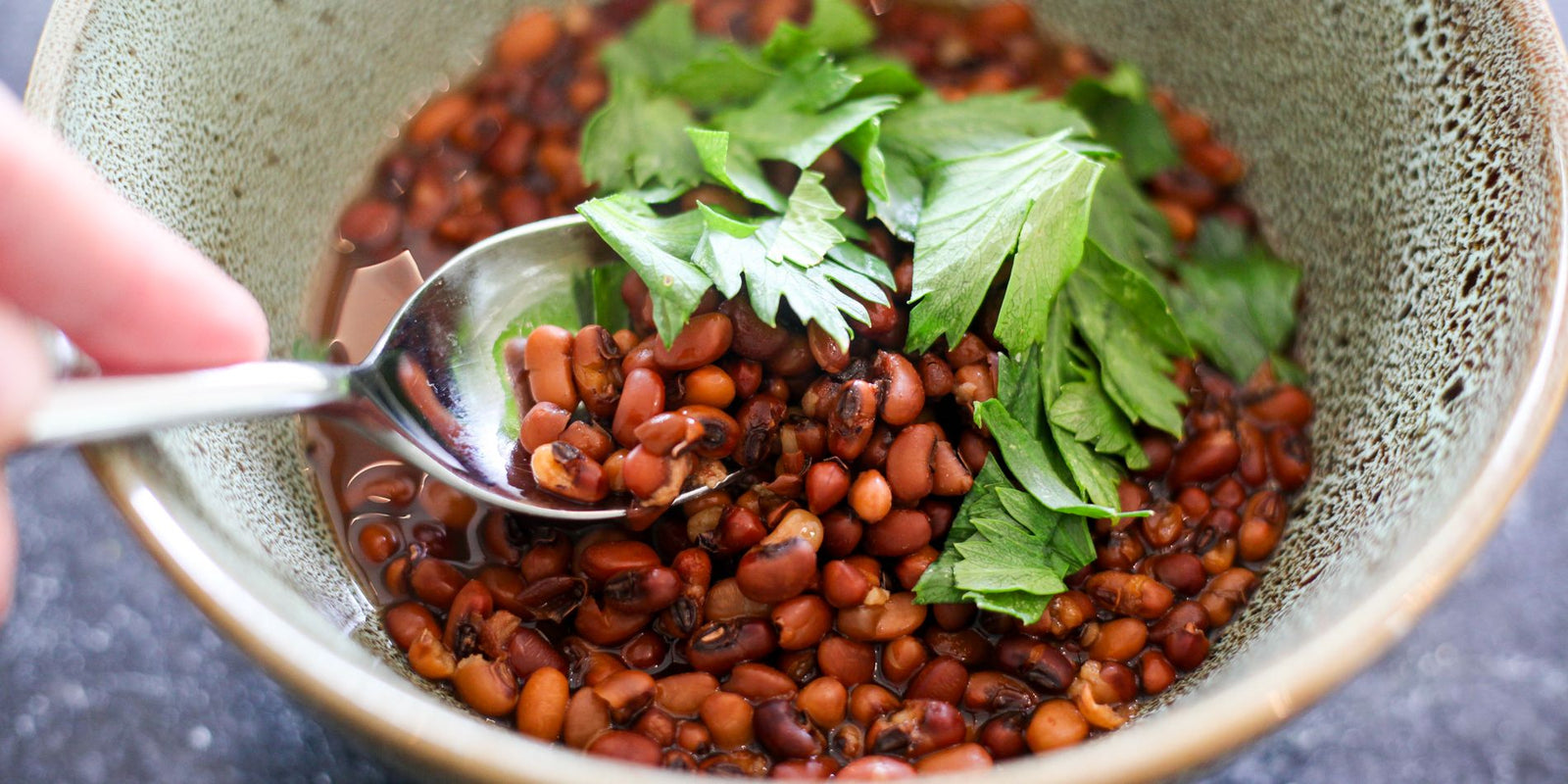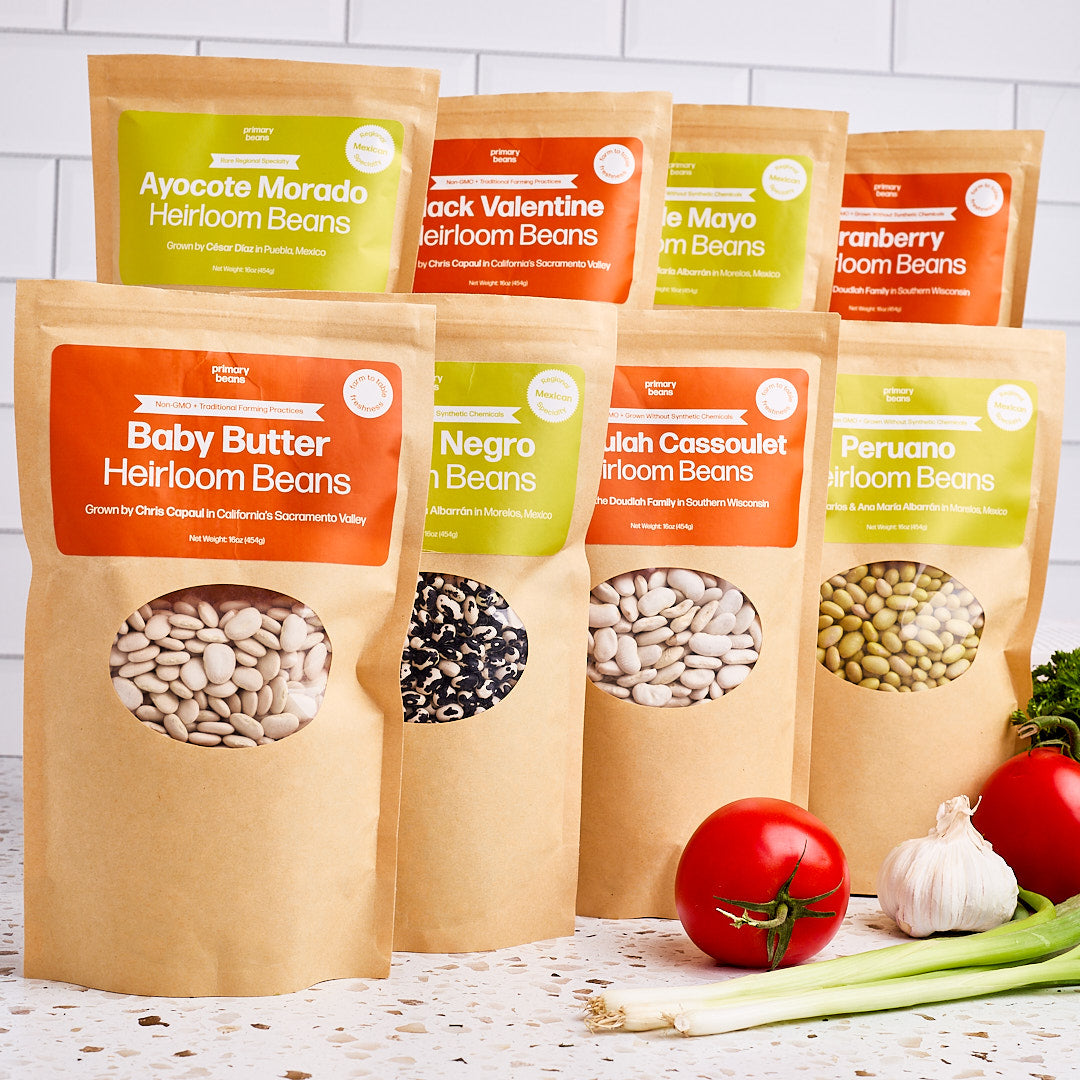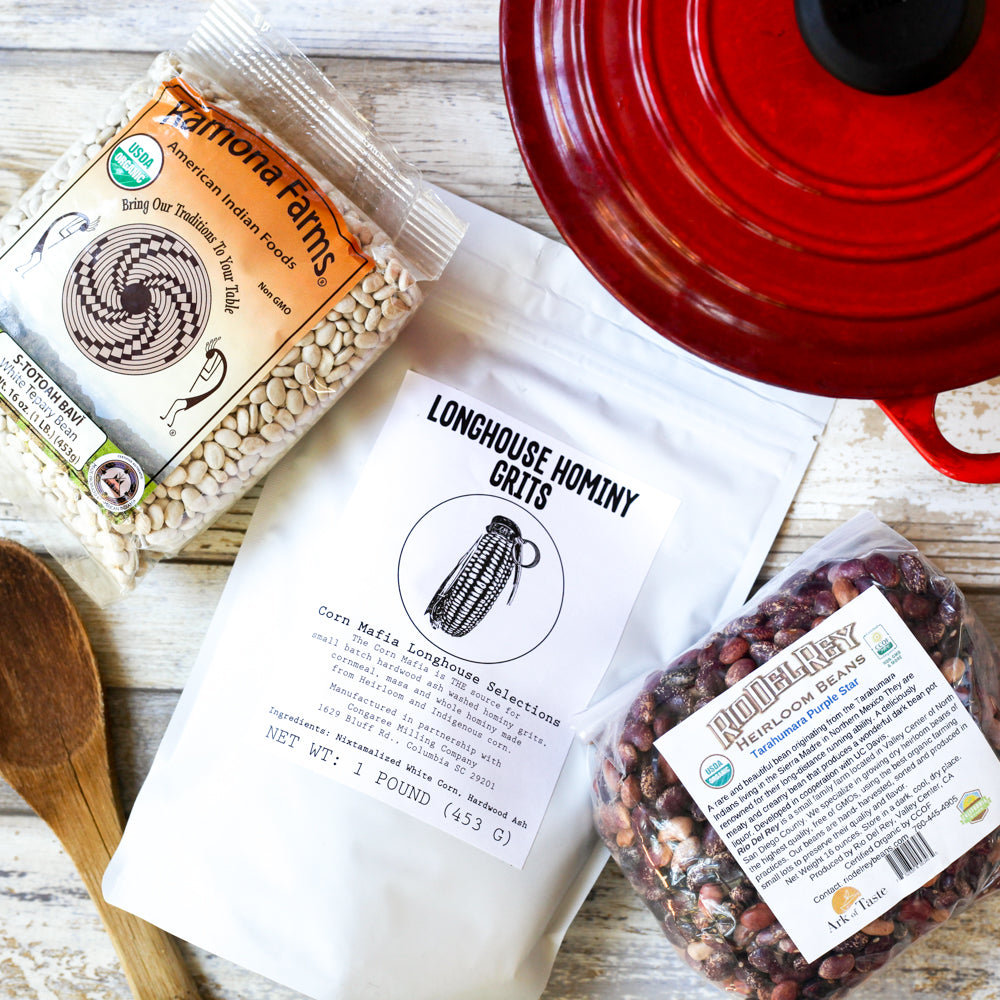10.99 FLAT RATE SHIPPING
10.99 FLAT RATE SHIPPING
SHOP

Sea Island Red Peas With Celery Leaves
February 01, 2024 1 min read
This very simple dish lets the flavor of these amazing heirloom field peas shine. Steeped in history, Sea Island Red Peas are a more flavorful and diminutive cousin to black eyed peas and are grown only on the Carolina Sea Islands. Introduced from Africa by enslaved people, they became a staple of the Gullah Geechee kitchen, typically paired with Carolina Gold Rice. During the depression, cultivation came to a stop and the Sea Island Red Pea nearly went extinct. Thankfully due to a few small farms they are making a comeback. Sea Island Red Peas are the original ingredient for Hoppin' John, a Low Country New Years tradition served with collard greens and said to bring good luck all year. They are meaty and slightly sweet, but unlike the store bought black eyed peas you may have tried in the past they are packed with deep, rich flavor that can be described as "meaty." No matter what time of year, Sea Island Red Peas will enliven a pot of beans, salad, soups and stews.
SEA ISLAND RED PEAS WITH CELERY LEAVES
Rated 5.0 stars by 1 users
Category
Side Dish
Cuisine
Southern
Servings
4
This very simple dish of heirloom Sea Island Red Peas and celery and herbs lets the flavor of these amazing heirloom field peas shine.
Lisa Riznikove

Ingredients
- 1 cup Sea Island red peas
- 1 cup diced onion
- 1 cup diced celery (reserve celery leaves)
- 1 cup diced carrot
- 2 sprigs of thyme
- 3 cups chicken (or veg) stock
- 2 Bay Leaves
- Salt and Pepper to taste.
-
Serve with Carolina Gold Rice and a good southern hot sauce like Red Clay Original Hot Sauce.
Directions
In a thick bottom pot sauté the onion, celery and carrot until tender.
Add stock, thyme and bay leaves. Rinse the red peas well and add to the pot. Bring to a boil and then reduce to a simmer. Simmer for 30 minutes until tender.
Remove the thyme stem and bay leaves, top with chopped celery leaves and serve with Carolina Gold Rice and hot sauce.
Recent Articles
About Us
Foodocracy is dedicated to creating a more sustainable and independent food system. We support small, independent farms across the nation.
Related Recipes
Get impossible to find beans and grains shipped direct to your doorstep each month from small family farms.
We support small, family owned farms across the nation. Did you know that farmers only make an average of 10 cents on every dollar you spend at the supermarket? Working directly with farms and not middle men ensures that more money goes back to the people actually growning your food.
Get 10% Off
Sign up for delicious recipes and special offers.
**Regularly priced items only.






